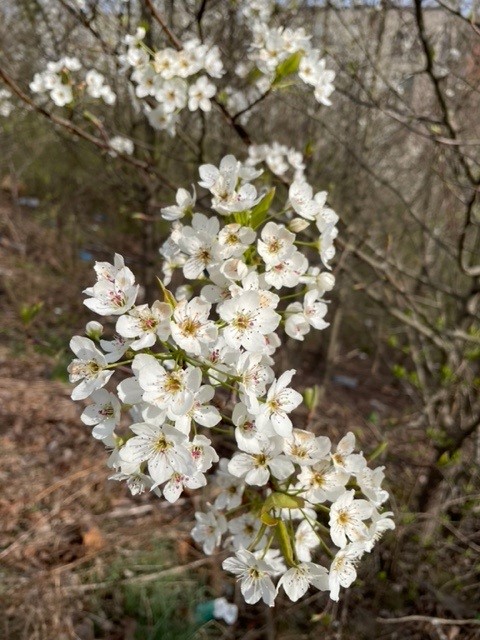
In-person & Virtual Program
From 7:00 p.m. until 8:00 p.m.
Few plant species have captured our delight and eventually our disdain as has the Callery pear tree (Pyrus calleryana). Imported into the United States from China in the early 1900’s, this species was first considered the savior of pear fruit crops along the Pacific coast. Eventually it became one of the most popular ornamental trees in the 1980’s-1990’s. Prized for its gorgeous white flowers in early spring, its tree shape, and quick growth, the species was commonly sold as the cultivar ‘Bradford’, before being released as ‘Chanticleer’, ‘Aristocrat’, ‘Cleveland Select’, ‘Respire’, and many other cultivars. Although each cultivar was self-sterile, the different cultivars could freely pollinate each other, leading to a sudden increase in fruit production as more people planted a greater variety of cultivars in the landscape. Seeds were then carried by birds to nearby natural areas, leading to a surge in wild Callery pear, which formed monocultures and frequently displaced other plant species. Today, increasing number of states are listing the Callery pear as an invasive species, and Ohio is the first state to ban the commercial sale and distribution of the species. In this presentation, we will explore this transition of the Callery pear from a popular garden tree to a despised invader of natural areas and explore the implications this has for other plant species.
Watch the recording on YouTube.

Theresa Culley is a plant biologist, Professor and Head of the Departmental of Biological Sciences at the University of Cincinnati. A desire to help reduce impacts of invasive plants in natural areas led to her involvement in the Ohio Invasive Plants Council and the Ohio Invasive Plant Advisory Committee. Recently, Culley has been working within the Midwestern Invasive Plant Network on a communication platform that shares information on plants escaping cultivation, as sentinels of plant invasion.
